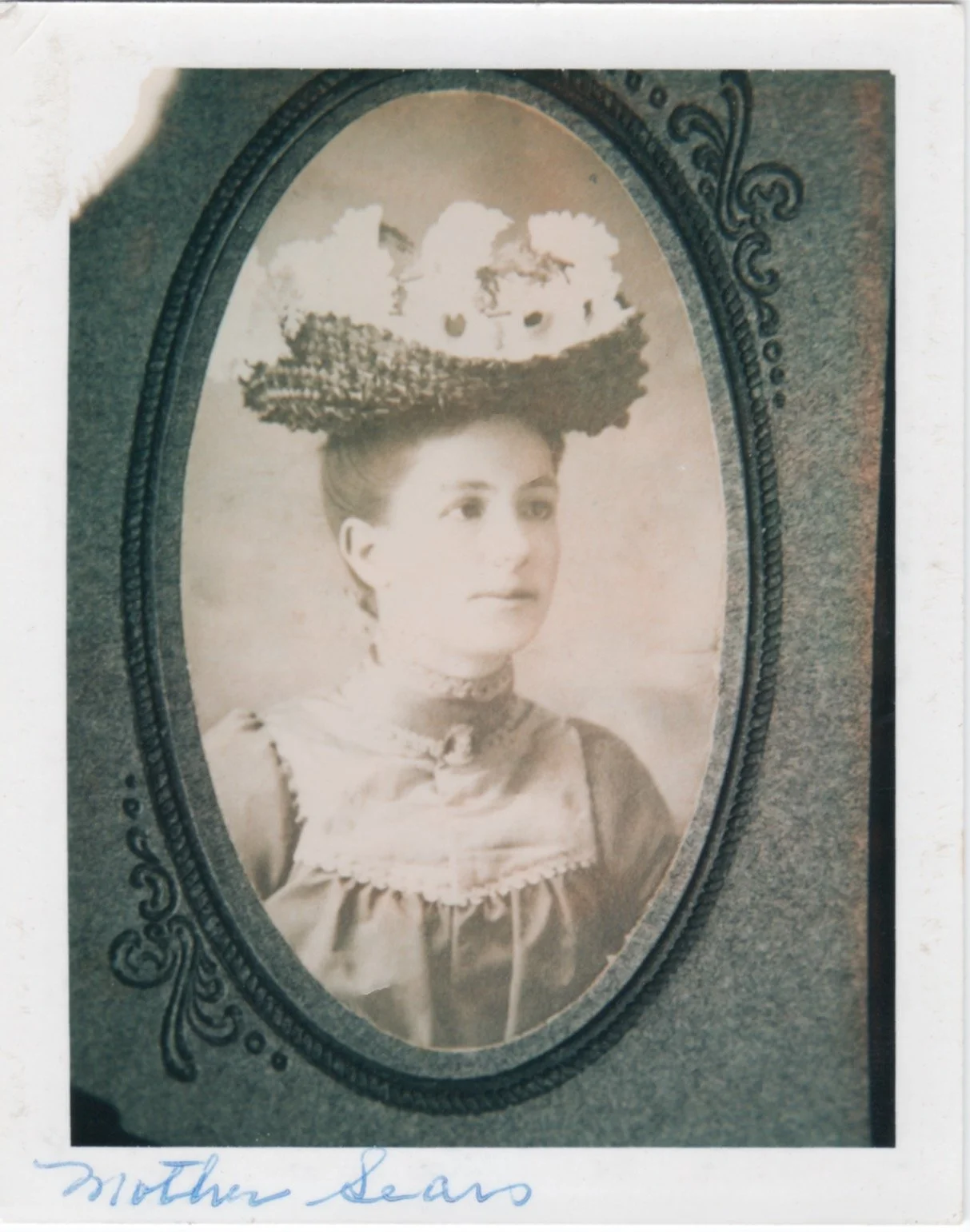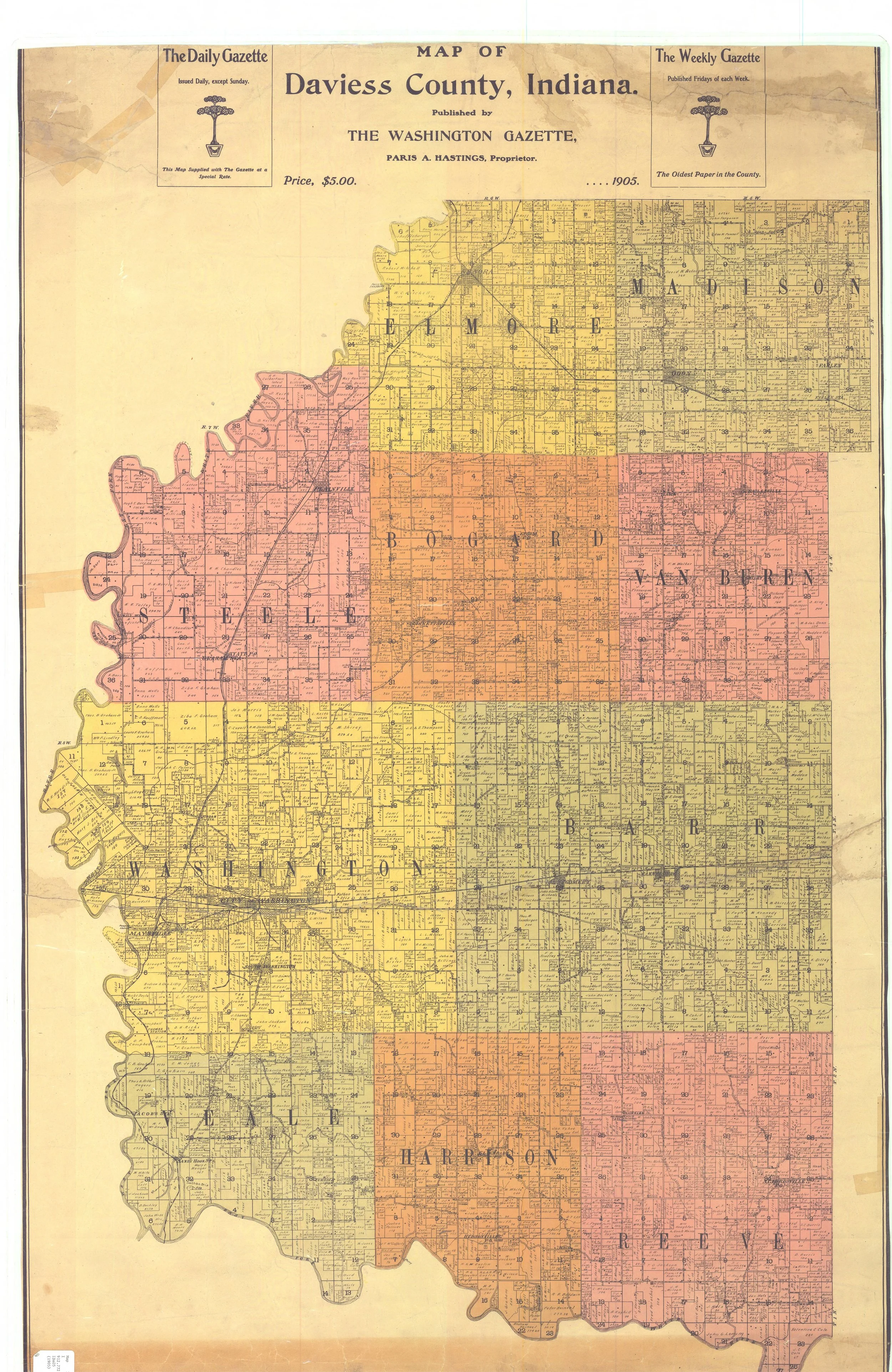I made a classic genealogy mistake—one that many of us fear but few of us want to admit: I confidently added the wrong man to my family tree.
My family always knew that my great-grandfather, Arthur Bryan Sears (1900–1964), was “adopted” by his stepfather, John A. Sears (1861–1951), around the age of five. No one really knew—or at least didn’t talk about—who Arthur’s biological father was. Arthur’s mother—my 2nd great-grandmother—was Clara Rachel Miles (1875–1934).
Arthur Bryan Sears (1900-1964)
Clara Rachel (Miles) Myers Sears (1875-1934), Arthur’s mother likely before Arthur was born
Several years ago, I thought I had cracked the case. I believed that Oliver Edgar Myers (1873–1935) was Arthur’s father. That would have made Oliver my 2nd great-grandfather. The paper trail seemed solid: a marriage record, a plausible timeline, and several circumstantial clues that pointed toward Oliver.
But the DNA told a very different story.
As the saying goes in genetic genealogy: DNA doesn’t lie.
After years of chasing connections that never quite materialized, I’m now confident in saying: Oliver Edgar Myers is not Arthur’s biological father.
In this post, I’ll walk through:
What we know about Arthur’s early years
Where the DNA evidence breaks down
New leads I’m exploring to uncover Arthur’s true paternity
1. What the Records Tell Us About Arthur’s Early Years
Arthur’s mother, Clara was born December 5, 1875, likely in Rutherford Township, Martin County, Indiana. In the 1880 U.S. Census, she appears as a four-year-old in a bustling household with a mix of eleven full, half, or step-siblings.
The 1890 Census is lost, so we lose sight of Clara for a while. But we pick her up again on April 7, 1896, when she marries Oliver Edgar Myers in neighboring Daviess County. Oliver, a widower, had previously been married to Mary Petty, who died shortly after giving birth to their daughter, Delphia, in 1893. (One person I spoke with recalled memories of Delphia.)
Arthur Sears was born October 6, 1900—placing his likely conception around early January of that year.
A December 1900 clipping from the Washington Gazette reports that Oliver filed for divorce, claiming Clara had left him in August 1899. Clara, in turn, accused him of infidelity—an allegation he denied.
As I continued piecing together Arthur’s early life, I obtained his official birth certificate from Daviess County, Indiana.
He’s listed simply as “Infant Male Myers,” born October 6, 1900, to Clara Miles. No father is recorded—an omission that, while subtle, speaks volumes.
The absence of a named father here quietly supports what the DNA would later confirm: that Arthur’s paternity was uncertain, unacknowledged—or both.
The 1900 U.S. Census offers more intrigue:
June 8, 1900: Oliver is living with his mother, Nancy Myers, in Bogard Township. He’s listed as widowed—still referring, it seems, to his first wife, Mary Petty. No sign of Clara.
June 9, 1900: A “Clara Myers,” age 25, appears as a servant in the household of the George Clarke family in nearby Elmore Township—about seven miles away. I’m confident this is Arthur’s mother, about five months pregnant at the time.
This census record also notes that Clara had two children, but none living—suggesting two prior pregnancies, likely with Oliver, that ended in miscarriage or infant loss. No birth or death records have surfaced for those children, though census data can be inconsistent.
Indiana County Map
1900 Daviess County, Indiana
Things get even more interesting just a page later in the Elmore Township census: living nearby is Henry Walls, his wife Janie (Clara’s sister, Frances Janie Miles Walls), and their two young children. Also in the household is Hilary Miles, Clara and Janie’s brother.
Here is a section of the family tree showing this relationship.
Janie died on January 18, 1904. A few months later, on July 9, 1904, a local newspaper reports that Clara Myers, “a married woman,” filed a bastardy suit against Henry Walls. These suits aimed to establish paternity and secure financial support for a child—Arthur would have been nearly four. The article also references Clara’s previous marriage and Janie’s recent death, further supporting the identification.
I haven’t located court records for the case’s outcome. But by early 1905, both Clara and Henry had remarried. Clara married John A. Sears on February 14, 1905, and went on to have five more children with him. In the 1910 Census, Arthur appears in John’s household as “Arthur Miers,” listed as his stepson. Sometime after, he adopted the Sears surname permanently.
Here’s a timeline of the key events:
April 7, 1896 – Clara marries Oliver Myers
August 1899 – Clara reportedly leaves Oliver
~January 10, 1900 – Arthur likely conceived
June 8–9, 1900 – Oliver and Clara appear in separate households
January 18, 1904 – Janie Miles Walls dies
~ February 1, 1904 – Clara lives with Henry Walls
July 9, 1904 – Clara files paternity suit
January 14, 1905 – Henry remarries
February 14, 1905 – Clara marries John Sears
April 1910 – Arthur appears as John’s stepson
2. Why DNA Says Oliver Isn’t the Father
Now for the science.
I had built out the Myers family tree on Ancestry and contacted over a dozen DNA cousins who descended from Oliver or his parents. Several had public DNA results—but not one matched me or any of the seven family kits I manage. These include:
My father
My brother
My aunt and uncle
My great-uncle Eugene Sears (Arthur’s son)
My son and daughter
Zero matches. Across multiple generations. That’s not just an oddity—it’s statistically improbable. Especially considering Eugene’s DNA, which is only two generations removed from Arthur’s biological father.
At first, I dismissed the absence of matches. Maybe the right cousins hadn’t tested. Maybe the data just hadn’t surfaced. But as the evidence (or lack thereof) piled up, I couldn’t ignore it.
One person I contacted would have been Eugene’s 2nd cousin—close enough that a DNA match should have been almost certain. The complete absence of overlap was definitive: Oliver Edgar Myers was not Arthur’s father.
Emotionally, that was a jolt. I had pictured Oliver as someone who may have abandoned his son, and that shaped how I viewed Arthur’s early life. Now I find myself asking a new question: which is harder—to grow up not knowing your father, or to grow up believing you were unwanted by the one you thought was yours?
Maybe Clara knew the truth. Maybe she didn’t. But now I am back at square one.
3. So Who Was Arthur’s Father?
I’m currently exploring three possibilities:
Possibility 1: Henry Walls
Clara filed a paternity suit against him—that’s a strong clue. The next step is to build out Henry’s descendants and look for shared DNA matches.
Possibility 2: George Clarke
This one’s more speculative. Clara, pregnant, was living in George’s household as a servant. Was it just employment—or something more? I’m mapping out George’s family and scanning for any matches.
Possibility 3: A Third Party—Possibly an Edmondson
Using Ancestry’s SideView tool, I’ve isolated paternal matches for Eugene Sears, even though Arthur himself was never tested. By removing matches linked to Clara’s side, I’ve found a few 2nd cousin–level matches with unfamiliar surnames.
One that keeps popping up: Edmondson.
One DNA match descends from Lucien Edmondson (1872–1957), who lived in Elmore Township in 1900—right where Clara was at the time. It’s far from proven, but compelling. And if I’m being honest, there’s a striking resemblance between Lucian and Arthur—but maybe that’s just wishful thinking.
Lucien W Edmondson (1872-1957)
Here are three closeup face photos of my great grandfather, Arthur Bryan Sears (1900-1964) next to one of Lucien W. Edmondson (1872-1957).
Arthur Bryan Sears (1900-1964)
Arthur Bryan Sears (1900-1964)
Arthur Bryan Sears (1900-1964)
Lucien W. Edmondson (1872-1957)
Final Thoughts
Genealogy is as much about unlearning as it is about discovery. This experience reminded me how easily even a well-documented paper trail can mislead when unaccompanied by DNA.
So, back to the drawing board I go—this time, with fewer assumptions and a lot more caution.



















